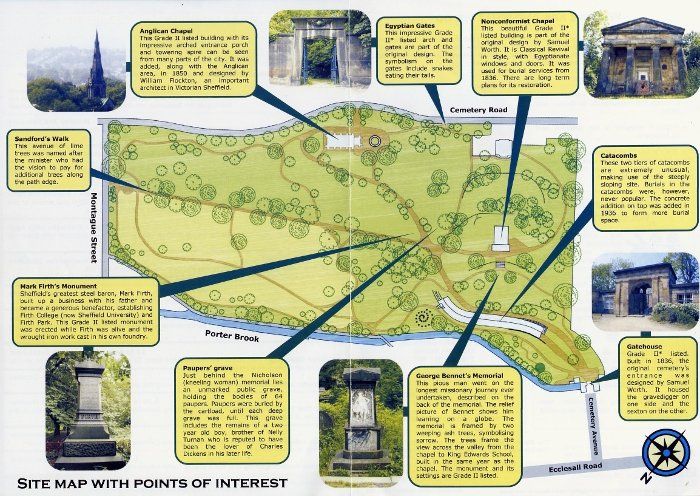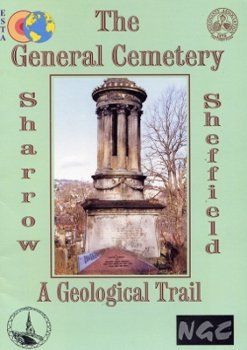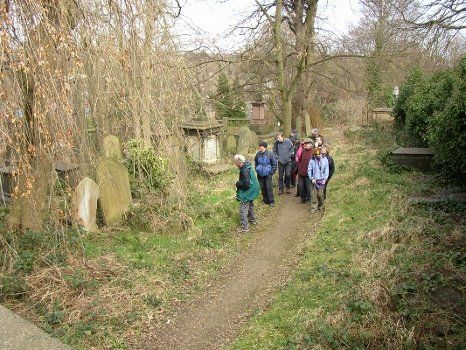Recording, conserving and promoting the landscape and rocks of the Sheffield region
Sheffield General Cemetery Walk
The General Cemetery was opened in 1836 "at some distance in the countryside", in a "remote and undisturbed" location, now part of the inner city suburb of Sharrow. It is one of the earliest examples, outside London, of a cemetery company being established to cope with the rapid growth of the country's industrial cities in the Georgian and Victorian periods. The Cemetery closed in 1978 and is now a Grade II* listed park, and a Local Nature Reserve, with many opportunities for studying natural and social history and for investigating the geology of its gravestones.
It is leased to the Sheffield General Cemetery Trust www.gencem.org

A booklet about some of the gravestones themselves is obtainable from the Gatehouse, for a self-guided tour of the original Nonconformist part of the Cemetery. The booklet suggests investigations of the geology and weathering characteristics of each type of stone, suitable for use with school students, aged 8 upwards.
The General Cemetery, Sharrow, Sheffield: a Geological Trail (2001) ©Peter Kennett, 16pp. £1

Sheffield Cemetery Geology Guide

Sheffield General Cemetery Geology tour
Rock in the Sheffield General Cemetery
Published as a free A3 fold-out leaflet by the Sheffield General Cemetery Trust in 2005 and designed on behalf of the Trust by Ark Design Management Ltd - Use the links below to download pdf files.A major refurbishment of the derelict Gatehouse and its surroundings was carried out in recent years. As part of a Memorial Garden, 29 large blocks of uncut stone were laid out in a Stone Spiral, easily accessible by the public, to demonstrate the varieties of stone which were used to make the gravestones and the buildings a short distance away. Examples of igneous, sedimentary and metamorphic rocks are laid out in sequence and display characteristic features which provide evidence about their origins. Three further igneous rocks from Scandinavia and Scotland are located next to the Gatehouse and clearly demonstrate the "plug and feather" methods by which they were quarried.
